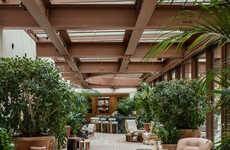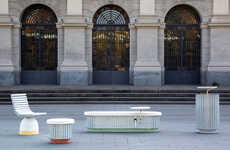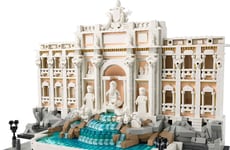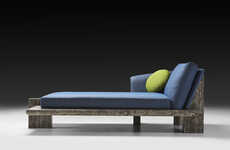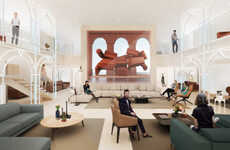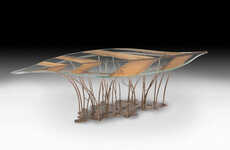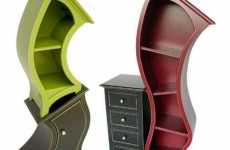
Italian Piazza Trays
Sandra Winn — September 26, 2008 — Art & Design
References: novembre.it & designboom
Rich Italian history and architecture are honored with these gorgeous and exquisite silver-plated brass Italian Piazza Trays by Designer Fabio Novembre. The collection is known as 100 Piazze’ for Driadekosmos.
1. The Piazza Dell Anfiteatro, Lucca. The Anfiteatro was constructed at the beginning of the 1st century by Emperor Claudius and became a square in the Middle Ages.
2. The Piazza del Campidoglio, Rome. Designed by one of the most famous artists in history, Michelangelo, under the authority of Pope Paul III, the construction on this magnificent and famous square began in 1538 and was finished in the 17th century.
3. The Piazza San Carlo, Turin. Designed by Carlo di Castellamonte in the mid-17th century, Piazza San Carlo’s features a bronze statue of the controversial Prince of Venice and Peidmont, Emanuele Filiberto.
4. The Piazza della Scala, Milan. Located in the beautiful city of Milan, this square is famous for its Leonardo Da Vinci sculpture that adorns the center and also for the Teatro alla Scala.
5. The Piazza della Republica, Florence. Built in the 19th century, it covers the Baths of Diocletian, which was built on 32 acres and could hold 3,000 bathers. In the center of the square lies The Fountain of the Naiads, a famous sculpture of nymphs who protect all bodies of water plus the underground.
6. The Piazza Ducale, Vegevano. This is one of the most famous piazzas in Italy and was built between 1492-1493.
7. The Piazza Di Palmanova, Palmanova. A stunning 9-point star-shaped piazza which contains roads and pathways that lead to the hexagon in the center known as Piazza Grande. Credits for this military fortified area go to Vincenzo Scamozzi and Giulio.
8. The Piazza dell’Annunziata, Venaria Reale. Contained in this huge square piazza is the Church of the Nativity of the Virgin Mary.
For those who are unfamiliar with the works of Fabio Novembre, he created the His and Her chairs, of which the most predominant and standout feature is the derriere.
1. The Piazza Dell Anfiteatro, Lucca. The Anfiteatro was constructed at the beginning of the 1st century by Emperor Claudius and became a square in the Middle Ages.
2. The Piazza del Campidoglio, Rome. Designed by one of the most famous artists in history, Michelangelo, under the authority of Pope Paul III, the construction on this magnificent and famous square began in 1538 and was finished in the 17th century.
3. The Piazza San Carlo, Turin. Designed by Carlo di Castellamonte in the mid-17th century, Piazza San Carlo’s features a bronze statue of the controversial Prince of Venice and Peidmont, Emanuele Filiberto.
4. The Piazza della Scala, Milan. Located in the beautiful city of Milan, this square is famous for its Leonardo Da Vinci sculpture that adorns the center and also for the Teatro alla Scala.
5. The Piazza della Republica, Florence. Built in the 19th century, it covers the Baths of Diocletian, which was built on 32 acres and could hold 3,000 bathers. In the center of the square lies The Fountain of the Naiads, a famous sculpture of nymphs who protect all bodies of water plus the underground.
6. The Piazza Ducale, Vegevano. This is one of the most famous piazzas in Italy and was built between 1492-1493.
7. The Piazza Di Palmanova, Palmanova. A stunning 9-point star-shaped piazza which contains roads and pathways that lead to the hexagon in the center known as Piazza Grande. Credits for this military fortified area go to Vincenzo Scamozzi and Giulio.
8. The Piazza dell’Annunziata, Venaria Reale. Contained in this huge square piazza is the Church of the Nativity of the Virgin Mary.
For those who are unfamiliar with the works of Fabio Novembre, he created the His and Her chairs, of which the most predominant and standout feature is the derriere.
Trend Themes
1. Historical Monument Platters - Disruptive innovation opportunity: Creating modern and functional platters or trays inspired by historical monuments.
2. Italian Piazza Trays - Disruptive innovation opportunity: Designing silver-plated brass trays that pay homage to iconic Italian piazzas.
3. Fabio Novembre Designs - Disruptive innovation opportunity: Collaborating with Fabio Novembre to create unique and artistic home decor inspired by his notable works.
Industry Implications
1. Home Decor - Disruptive innovation opportunity: Incorporating historical architecture and design into functional home decor products.
2. Art and Design - Disruptive innovation opportunity: Exploring the intersection of art, design, and historical references to create visually compelling products.
3. Hospitality and Tourism - Disruptive innovation opportunity: Offering luxury hotel and resort experiences that showcase the cultural heritage of a destination through themed decor and amenities.
1
Score
Popularity
Activity
Freshness

